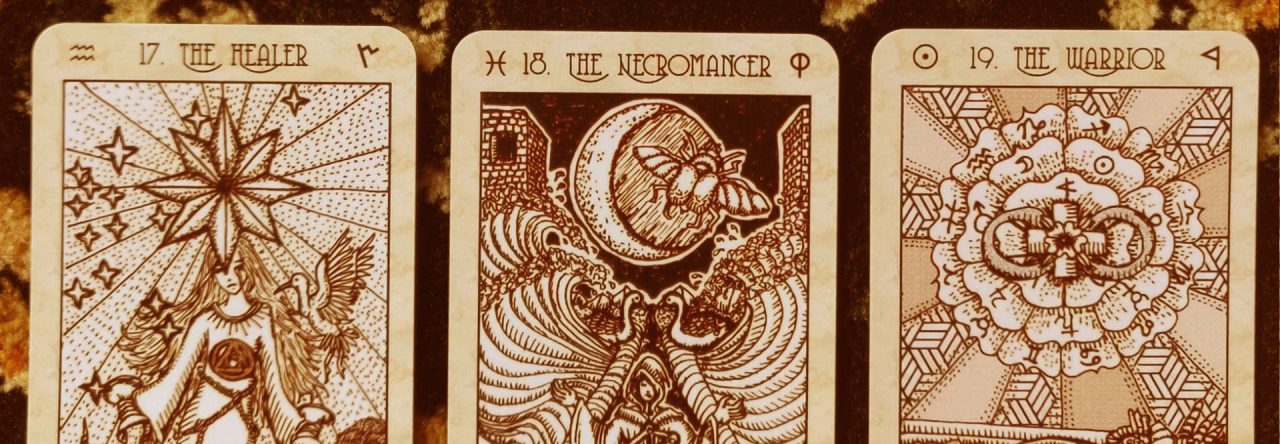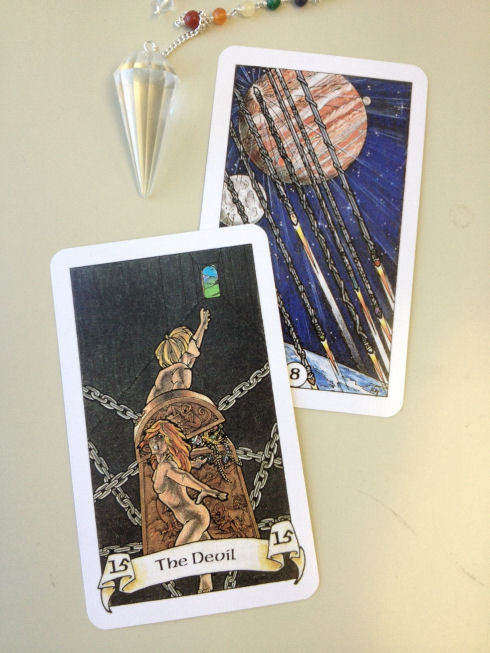
The Poet Tarot published by Two Sylvias Press has just made its debut at the 2014 AWP Conference in Seattle. It was created by Kelli Russell Agodon, who is herself a writer, editor, and poet, and Annette Spaulding-Convy, also a poet. I received an advance review copy and am loving it! This will be one of those amazing decks I use when reading for poets, writers, and artists.
There may be some debate as to whether the Poet Tarot is a tarot deck or whether it is an oracle deck, but more on that later. I tend to see it more as an oracle deck for reasons I’ll explain.

The deck comes in a yellow organza drawstring pouch along with a guidebook, and you will definitely need the guidebook. The dimensions of the cards are about 2.75″ x 4.75″, which for me is the perfect size to shuffle with. They’re very snug in the hands. The guidebook is 5″ x 8″ and while that would not bother me ordinarily, I can’t imagine using the Poet Tarot deck without the guidebook, and so for that, if both were the same size, I could put both in the same pretty cedar box and keep them together on my writing desk, no problem. I have to imagine that as writers come, I’m not alone in that sentiment. Due to the specific nature and purpose of this deck, it would just make more sense to have the guidebook be the same size as the cards, with the intention that the two will always accompany one another.

The art of the deck is in a digital collage form that blends Victorian art and imagery with poet busts in a wholly contemporary style. It’s really breathtaking to look through and has a natural appeal to most 21st century writer sensibilities. They’re borderless like many contemporary decks today, and the borderless design suits the deck well.
Once you hold this deck, you’ll know that every aspect of it was designed for the writer in mind. I just want this deck (and its guidebook) in an ornate wood box in the corner of my writing desk next to Strunk & White. You know what I mean?
The cards are subdivided into the Poets (Major Arcana) and the Suits. The Suits are Quills, Muses, Mentors, and Letterpresses, corresponding with Wands, Cups, Swords, and Pentacles respectively. The four suits represent the four stages of the creative writing process: Quills for creation, Muses for inspiration, Mentors for revision, and Letterpresses for completion. I really love the thoughtful way Agodon and Spaulding-Convy have designed the Poet Tarot deck.
Continue reading “The Poet Tarot: A Divinatory Tool for Poets and Writers” →










